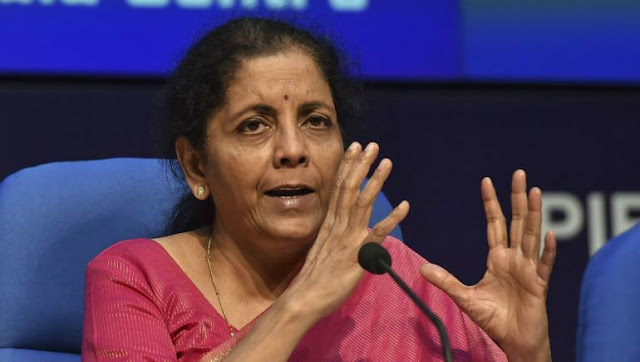प्रधानमंत्री नरेंद्र मोदी की मंत्रीपरिषद का आकार अब बड़ा हो गया है। केंद्रीय मंत्रीपरिषद में बुधवार को विस्तार और फेरबदल किया गया। इसमें 36 नए चेहरों को शामिल किया गया है जबकि सात वर्तमान राज्यमंत्रियों को प्रमोट कर मंत्रिमंडल में शामिल किया गया। आठ नए चेहरों को भी कैबिनेट मंत्री का दर्जा दिया गया। राष्ट्रपति रामनाथ कोविंद ने राष्ट्रपति भवन के दरबार हॉल में आयोजित एक समारोह में मंत्रिपरिषद में शामिल किए गए सभी 43 सदस्यों को पद व गोपनीयता की शपथ दिलाई। इन सभी मंत्रियों के विभागों का बंटवारा भी कर दिया गया है। तो चलिए मंत्री और मंत्रालयों की जानकारी लेकर अपना सामान्य ज्ञान बढ़ाते हैं।
नरेंद्र मोदी : कार्मिक, जन शिकायत और पेंशन मंत्रालय, परमाणु ऊर्जा विभाग, अंतरिक्ष विभाग। सभी महत्वपूर्ण नीतिगत मुद्दे तथा वे सभी विभाग, जो किसी मंत्री को आवंटित नहीं किए गए हैं।
कैबिनेट मंत्री
1 राजनाथ सिंह : रक्षा मंत्रालय
2 अमित शाह : गृहमंत्रालय, सहकारिता मंत्रालय
3 नितिन गडकरी : सड़क परिवहन एवं राजमार्ग (एमएसएमई मंत्रालय हटाया गया)
4 निर्मला सीतारमण : वित्त मंत्री और कॉर्पोरेट मामलों के मंत्री
5 नरेंद्र सिंह तोमर : कृषि एवं किसान कल्याण मंत्री
6 एस जयशंकर : विदेश मंत्री
7 अर्जुन मुंडा : जनजातीय मामलों के मंत्री
8 स्मृति ईरानी : महिला एव बाल विकास मंत्रालय
9. पीयूष गोयल : वाणिज्य और उद्योग मंत्री, उपभोक्ता मामले, खाद्य और सार्वजनिक वितरण मंत्री और कपड़ा मंत्री
10. धर्मेंद्र प्रधान : शिक्षा मंत्री, कौशल विकास और उद्यमिता मंत्री
11. प्रल्हाद जोशी : संसदीय कार्य मंत्री, कोयला मंत्री, और खान मंत्री
12. नारायण तातू राणे : सूक्ष्म, लघु और मध्यम उद्यम मंत्री
13. सर्बानंद सोनोवाल - बंदरगाह, जहाजरानी और जलमार्ग मंत्री, आयुष मंत्री
14. मुख्तार अब्बास नकवी : अल्पसंख्यक मामलों के मंत्री
15. वीरेंद्र कुमार : सामाजिक न्याय और अधिकारिता मंत्री
16. गिरिराज सिंह - ग्रामीण विकास मंत्री, और पंचायती राज मंत्री
17. ज्योतिरादित्य एम. सिंधिया : नागरिक उड्डयन मंत्री
18. रामचंद्र प्रसाद सिंह : इस्पात मंत्री
19. अश्विनी वैष्णव : रेल मंत्री, संचार मंत्री, और इलेक्ट्रॉनिक्स-सूचना प्रौद्योगिकी मंत्री
20. पशुपति कुमार पारस : खाद्य प्रसंस्करण, उद्योग मंत्री
21. गजेन्द्र सिंह शेखावत : जल शक्ति मंत्री
22. किरण रिजिजू : कानून और न्याय मंत्री
23. राज कुमार सिंह : विद्युत मंत्री, और ऊर्जा मंत्री
24. हरदीप सिंह पुरी : पेट्रोलियम और प्राकृतिक गैस मंत्री, और आवास और शहरी मामलों के मंत्री
25. मनसुख मंडाविया : स्वास्थ्य और परिवार कल्याण मंत्री, और रसायन और उर्वरक मंत्री
26. भूपेंद्र यादव : पर्यावरण, वन और जलवायु परिवर्तन मंत्री, और श्रम और रोजगार मंत्री
27. महेंद्र नाथ पाण्डेय : भारी उद्योग मंत्री
28. पुरुषोत्तम रूपाला : मत्स्य पालन, पशुपालन और डेयरी मंत्री
29. जी. किशन रेड्डी : संस्कृति मंत्री, पर्यटन मंत्री, और पूर्वोत्तर क्षेत्र के विकास मंत्री
30. अनुराग सिंह ठाकुर : सूचना और प्रसारण मंत्री, और युवा मामले और खेल मंत्री
राज्य मंत्री (स्वतंत्र प्रभार)
1. राव इंद्रजीत सिंह : सांख्यिकी और कार्यक्रम कार्यान्वयन मंत्रालय के राज्य मंत्री (स्वतंत्र प्रभार), योजना मंत्रालय के राज्य मंत्री (स्वतंत्र प्रभार), और कॉर्पोरेट मामलों के मंत्रालय में राज्य मंत्री
2. डॉ. जितेंद्र सिंह : विज्ञान और प्रौद्योगिकी मंत्रालय के राज्य मंत्री (स्वतंत्र प्रभार), पृथ्वी विज्ञान मंत्रालय के राज्य मंत्री (स्वतंत्र प्रभार), प्रधान मंत्री कार्यालय में राज्य मंत्री, कार्मिक, लोक शिकायत और पेंशन मंत्रालय में राज्य मंत्री, परमाणु ऊर्जा विभाग में राज्य मंत्री; तथा अंतरिक्ष विभाग में राज्य मंत्री
राज्य मंत्री
1. श्रीपद येसो नाइक : बंदरगाह, जहाजरानी और जलमार्ग मंत्रालय में राज्य मंत्री और पर्यटन मंत्रालय में राज्य मंत्री
2. फग्गनसिंह कुलस्ते : इस्पात मंत्रालय में राज्य मंत्री, और ग्रामीण विकास मंत्रालय में राज्य मंत्री
3. प्रहलाद सिंह पटेल : जल शक्ति मंत्रालय में राज्य मंत्री, और खाद्य प्रसंस्करण उद्योग मंत्रालय में राज्य मंत्री
4. अश्विनी कुमार चौबे : उपभोक्ता मामले, खाद्य और सार्वजनिक वितरण मंत्रालय में राज्य मंत्री, और पर्यावरण, वन और जलवायु परिवर्तन मंत्रालय में राज्य मंत्री
5. अर्जुन राम मेघवाल : संसदीय कार्य मंत्रालय में राज्य मंत्री, और संस्कृति मंत्रालय में राज्य मंत्री
6. जनरल (सेवानिवृत्त) वी. के. सिंह : सड़क परिवहन और राजमार्ग मंत्रालय में राज्य मंत्री, और नागरिक उड्डयन मंत्रालय में राज्य मंत्री
7. कृष्ण पाल : विद्युत मंत्रालय में राज्य मंत्री, और भारी उद्योग मंत्रालय में राज्य मंत्री
8. दानवे रावसाहेब दादाराव : रेल मंत्रालय में राज्य मंत्री, कोयला मंत्रालय में राज्य मंत्री, और खान मंत्रालय में राज्य मंत्री
9. रामदास अठावले : सामाजिक न्याय और अधिकारिता मंत्रालय में राज्य मंत्री
10. साध्वी निरंजन ज्योति : उपभोक्ता मामले, खाद्य और सार्वजनिक वितरण मंत्रालय में राज्य मंत्री, और ग्रामीण विकास मंत्रालय में राज्य मंत्री
11. डॉ. संजीव कुमार बाल्यान : मत्स्य पालन, पशुपालन और डेयरी मंत्रालय में राज्य मंत्री
12. नित्यानंद राय : गृह मंत्रालय में राज्य मंत्री
13. पंकज चौधरी : वित्त मंत्रालय में राज्य मंत्री
14. अनुप्रिया सिंह पटेल : वाणिज्य एवं उद्योग मंत्रालय में राज्य मंत्री
15. एस. पी. सिंह बघेल : कानून और न्याय मंत्रालय में राज्य मंत्री
16. राजीव चंद्रशेखर : कौशल विकास और उद्यमिता मंत्रालय में राज्य मंत्री, और इलेक्ट्रॉनिक्स और सूचना प्रौद्योगिकी मंत्रालय में राज्य मंत्री
17. शोभा करंदलाजे : कृषि और किसान कल्याण मंत्रालय में राज्य मंत्री
18. भानु प्रताप सिंह वर्मा : सूक्ष्म, लघु और मध्यम उद्यम मंत्रालय में राज्य मंत्री
19. दर्शना विक्रम जरदोश : कपड़ा मंत्रालय में राज्य मंत्री, और रेल मंत्रालय में राज्य मंत्री
20. वी. मुरलीधरन : विदेश मंत्रालय में राज्य मंत्री, और संसदीय कार्य मंत्रालय में राज्य मंत्री
21. मीनाक्षी लेखी : विदेश मंत्रालय में राज्य मंत्री, और संस्कृति मंत्रालय में राज्य मंत्री
22. सोम प्रकाश : वाणिज्य और उद्योग मंत्रालय में राज्य मंत्री
23. रेणुका सिंह सरुता : जनजातीय मामलों के मंत्रालय में राज्य मंत्री
24. रामेश्वर तेली : पेट्रोलियम और प्राकृतिक गैस मंत्रालय में राज्य मंत्री, और श्रम और रोजगार मंत्रालय में राज्य मंत्री
25. कैलाश चौधरी : कृषि और किसान कल्याण मंत्रालय में राज्य मंत्री
26. अन्नपूर्णा देवी : शिक्षा मंत्रालय में राज्य मंत्री
27. ए. नारायणस्वामी : सामाजिक न्याय और अधिकारिता मंत्रालय में राज्य मंत्री
28. कौशल किशोर : आवास और शहरी मामलों के मंत्रालय में राज्य मंत्री
29. अजय भट्ट : रक्षा मंत्रालय में राज्य मंत्री, और पर्यटन मंत्रालय में राज्य मंत्री
30. बी एल वर्मा : उत्तर पूर्वी क्षेत्र के विकास मंत्रालय में राज्य मंत्री, और सहकारिता मंत्रालय में राज्य मंत्री
31. अजय कुमार : गृह मंत्रालय में राज्य मंत्री
32. देवुसिंह चौहान : संचार मंत्रालय में राज्य मंत्री
33. भगवंत खुबा : नवीन और नवीकरणीय ऊर्जा मंत्रालय में राज्य मंत्री, और रसायन और उर्वरक मंत्रालय में राज्य मंत्री
34 : कपिल मोरेश्वर पाटिल : पंचायती राज मंत्रालय में राज्य मंत्री
35. प्रतिमा भौमिक : सामाजिक न्याय और अधिकारिता मंत्रालय में राज्य मंत्री
36. डॉ. सुभाष सरकार : शिक्षा मंत्रालय में राज्य मंत्री
37. डॉ. भागवत किशनराव कराड : वित्त मंत्रालय में राज्य मंत्री
38. डॉ. राजकुमार रंजन सिंह : विदेश मंत्रालय में राज्य मंत्री, और शिक्षा मंत्रालय में राज्य मंत्री
39. डॉ. भारती प्रवीण पवार : स्वास्थ्य और परिवार कल्याण मंत्रालय में राज्य मंत्री
40. बिश्वेश्वर टुडू : जनजातीय मामलों के मंत्रालय में राज्य मंत्री, और जल शक्ति मंत्रालय में राज्य मंत्री
41. शांतनु ठाकुर : बंदरगाह, जहाजरानी और जलमार्ग मंत्रालय में राज्य मंत्री
42. डॉ. मुंजापारा महेंद्रभाई : महिला एवं बाल विकास मंत्रालय में राज्य मंत्री, और आयुष मंत्रालय में राज्य मंत्री
43. जॉन बारला : अल्पसंख्यक मामलों के मंत्रालय में राज्य मंत्री
44. डॉ. एल. मुरुगन : मत्स्य पालन, पशुपालन और डेयरी मंत्रालय में राज्य मंत्री, और सूचना और प्रसारण मंत्रालय में राज्य मंत्री
45. निसिथ प्रमाणिक : गृह मंत्रालय में राज्य मंत्री, और युवा मामले और खेल मंत्रालय में राज्य मंत्री
Source - https://www.livehindustan.com/national/story-modi-cabinet-reshuffle-2021-cabinet-modi-cabinet-expansion-2021-full-list-of-ministers-india-hindi-news-4199686.html





















